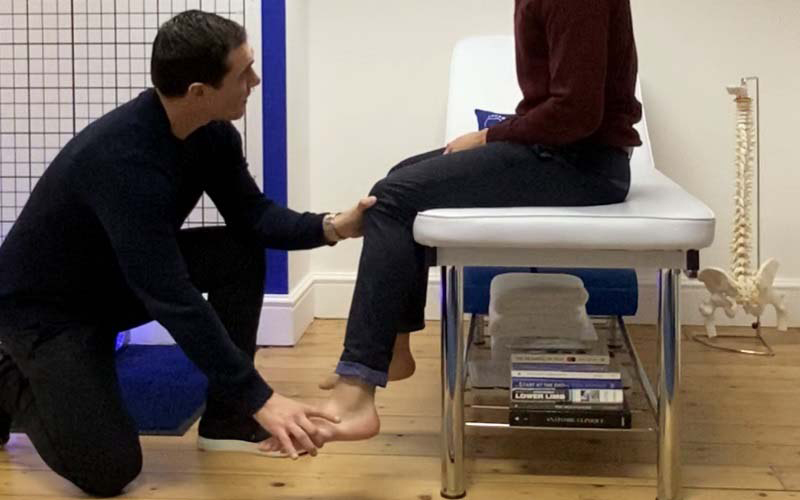By Christophe Champs, founder of PODO Clinic and Workshop
If you have heard about someone who has found they have one leg longer than the other, you may have been shocked or sympathetic. What you may not know is that this has a name; ‘limb length discrepancy’.
A limb length discrepancy, or LLD, can actually affect both arms and legs but, since at PODO we specialise in all types of locomotion, including the gait, let’s look specifically at leg length discrepancy.
If these terms are all new to you, you may be surprised to hear that you have a good chance of having the condition yourself – more than 50% of people have a small difference in the lengths of their legs. The good news is that the difference is rarely very big and is usually only a few millimetres.
Nevertheless, there are various myths surrounding LLD, which range from one extreme – you will almost certainly need surgery – to another – no one needs to intervene because the LLD is too small to worry about.
So, I thought I should set the subject straight and share the six things you should know about a leg length discrepancy.
- A leg length discrepancy is not a medical condition that automatically requires treatment
We all love a diagnosis. That moment when the health professional who has been recommended to us, or to whom we have been referred, uses some big machines and technical software to put a name – preferably in Latin – to our problem. But I can reassure you now that an LLD is not a condition that automatically requires medical treatment. Sometimes it’s not even a problem.
What you do need to do if you have LLD is to start understanding why you have it, to notice how it impacts your quality of life, comfort, or performance and, most importantly, to find out how to deal with it. That is what really matters and is far more important than knowing one more medical term to drop into a dinner party conversation.
- Why do we have one leg shorter than the other?
An LLD can develop at any stage in life. It can be visible at birth (congenital) or acquired later, while growing as a child and / or adolescent, or it can happen as an adult. An LLD can be post traumatic, resulting from surgery or from a severe fracture affecting your thigh bone, tibia, fibula, foot or ankle. It can also be caused by a fracture that has healed badly, an infection, a bone cyst, a bone tumour, and so on.
At PODO, I like to remind my patients that only one rule applies while your feet are on the ground: No one is symmetrical. However, although both feet are different, your body always keeps your eyes level on the horizon. That’s because, in between those feet and eyes, every joint, at every level (ankle, knee, pelvis, shoulder, etc.) will adapt in every body plane in order to ensure your eyes remain level. This can, for example, lead to an antalgic gait, where we walk differently to avoid discomfort, which manifests as a limp.
At that point it is a good idea to see an expert in Biomechanics who can look at your gait and reassure you, as well as facilitating you to keep on top of things and avoid unnecessary body pain, now and in the future.
When it comes to biomechanics, focusing on your alignment, balance, and posture; both static and dynamic; allows us to measure the risks associated with a leg length discrepancy, in terms of direct damages or risks of developing osteoarthritis in the future.
- Measuring a leg length discrepancy
A standing X- ray is the most common procedure to measure an LLD. However, this is also where I see the most inconsistency in results. And this is a major motivation for writing this article.
Let’s be clear; X-rays are a phenomenal tool to help us assess our bones and joints. But – rather like an Instagram post – they remain two-dimensional pictures trying to illustrate a three-dimensional reality.
For example, drop one of your arches by over-pronating (inward rolling) on one foot only, and your hip on the same side will probably drop as well – following your knee, of course. Structurally (in terms of bone size) you will be fine, but the drop of this arch would make that leg appear shorter. Now, if you imagine in this case that this postural short leg was diagnosed and addressed with a heel lift, not only will you not be helping your body to work better, but you might actually increase this over-pronation and make things worse. In 2D it looks like a great idea to compensate that frontal LLD… in reality, it is not.
- The so-called rules
Over the years, I’ve had patients telling me that there is no need to address a leg length discrepancy under 1cm.
Now, we all like simple rules; they are easy to remember and people always tell us we are right when we repeat a universal and well-known “truth”! Just because they’ve heard it before, it doesn’t make it true. I found it amusing to hear in the UK that the rule applies to discrepancies of up to 1 INCH. One inch is roughly 2.5cm! We can’t stretch the rule like that.
So, I believe we should leave the self-diagnosis rules aside and consider our quality of life, when deciding whether to address an LLD.
- Surgery or conservative treatments?
The main factors to take into consideration when addressing our fantastic human body are,
firstly, the structural factors (bones’ lengths and shapes), then the postural factors (bones’ and joints’ positions and adaptations).
You will best address the postural problems with conservative treatments (non-surgical / non-invasive) or radical treatments (ones that aim to cure the disease rather than merely relieve symptoms). But you will only alter the structural factors by getting an orthopaedic surgeon onboard, to either lengthen the shorter leg or shorten the longer one. This is rarely necessary but sometimes it is, and I cannot recommend enough getting opinions from two different consultants and making sure all conservative solutions have been tried and have been unsuccessful before going down this route.
- What happens next?
It rarely matters whether you have one leg shorter / longer than the other. Up to a certain level of asymmetry or discomfort, we might not even address it with a heel lift or wedge.
Heel lifts and wedges can be added as a conservative treatment, or a pair of orthotics or insoles within, or on, your shoes can be added straight away. Remember, they will only work when you wear them. This can be enough if you wear shoes a lot but becomes useless if you spend most of your time barefoot.
Keep an eye on your shoes, as they will wear unevenly, increase your asymmetry, affect your biomechanics and aggravate many symptoms.
Finally, do NOT try to address an LLD alone: It is not always the source of your problems, it takes knowledge and skill to properly diagnose it, addressing it is a tricky task and, most importantly, the wrong solution will simply worsen the problem.
 ABOUT THE AUTHOR
ABOUT THE AUTHOR
Christophe Champs is an expert in Biomechanics, and the founder of PODO Clinic and Workshop. Christophe works with clients to help correct postural and biomechanical issues that are causing pain or putting a client at risk of injury. By testing both the moving gait and the still posture Christophe can correct misalignment and asymmetry through creating custom-made orthotics to suit the exact needs of each individual client.
Web: www.podo.london
Instagram: https://www.instagram.com/podo.london/
Facebook: https://www.facebook.com/podo.london/
Twitter: https://twitter.com/PodoLondon
YouTube: https://www.youtube.com/channel/UCss43g6-7mcNBwrRnf1zKlw
LinkedIn: https://www.linkedin.com/in/christophe-champs-podo/
